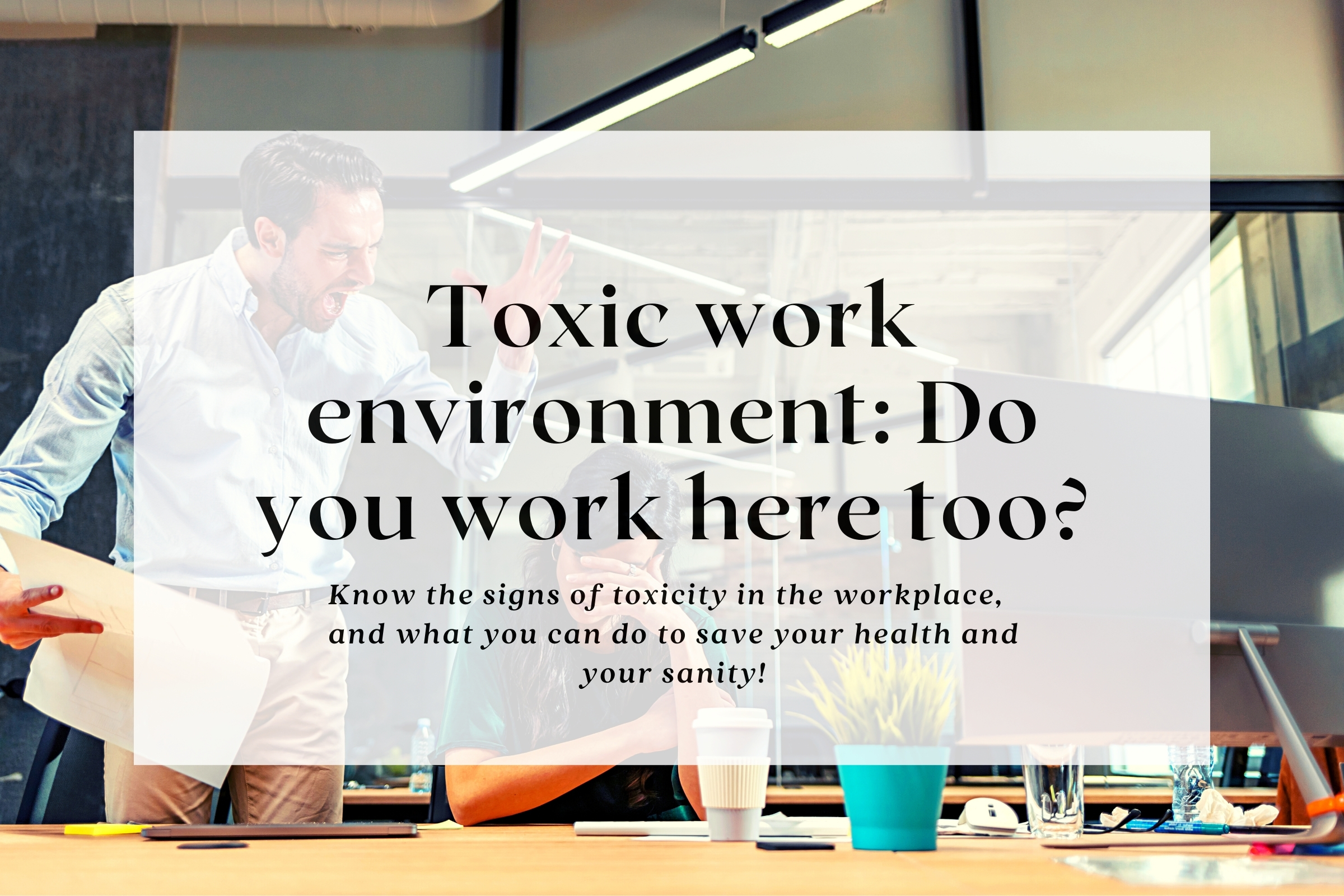The reality many of us face in the workplace
Let’s face it. We’ve all experienced the less than ideal workplace setup. This is what I call a toxic work environment. From disjointed and inconsistent leadership messaging, micro-managing, and unrealistic goal setting to outright incompetence, we’ve seen it all! There is nothing normal about it and quite honestly, it’s in every organization’s best interest, to eradicate these types of unhealthy leadership styles (or at least reduce it to the bare minimum).
How can you tell you’re in a toxic work environment?
While it differs across the board depending on your field, regardless of which one you’re in, they all share similar characteristics.
- Unmotivated employees and coworkers (i.e. apathy)
- Poor (leadership) communication
- Excessive employee turnover (i.e. employee burnout, understaffing, etc)
- Inequity (unequal treatment, favoritism, etc)
- Low employee engagement
My observations
It’s not always overt and I would argue, that the more stressful the profession, the more obvious this toxicity becomes. For instance, If you’re a frontline worker, emergency responder, or any other profession that requires frequent engagement with other people in heightened situations, a healthy work environment is crucial. Take it from someone who works in a healthcare field, when you’re dealing with “people” in crisis or life-changing situations, the last thing you need is to be in a workplace where you don’t feel valued, safe, or supported.
Unfortunately, the toxic workplace is something that has become normalized across many fields. With the added stress and challenges of a global pandemic, “everything” is more visible-problems become more visible and the status quo is no longer acceptable. In short, Covid-19 has demonstrated that organizations do in fact, prioritize those “things” that they deem important and relegate the rest to the wayside. When employee health, wellness, etc is not a priority this often shows up as a toxic work environment!
We live in an age where for the most part, profit is prioritized over the health and wellness of employees as well as the general public. Short-sighted/ finite thinking and a general culture of inequity, all feed into this pervasive toxic soup. So how can you really know? Let’s take a look.
So what are the signs of a toxic work environment?
Trust me, it won’t take you long to figure these out! an unhealthy workplace affects your overall health and wellness (especially your mental health), so it’s important to know what a toxic workplace looks like. Here are just a few signs that you’re working in a toxic work environment.
1. Unmotivated employees
Probably the most obvious sign of a toxic work environment is one where there’s an air of apathy and lack of motivation among colleagues. There’s a difference between the odd “lazy” co-worker and one who is unmotivated in an environment where employees feel undervalued, unheard, etc.
2. Poor (leadership) communication
Most people understand, that there are many layers to communication; from body language, tone, to actual spoken words. This is a huge weakness of poor leadership and as a consequence, another indicator of toxicity in the workplace. Communication is the mode of informing and setting the “rules of engagement” in the workplace, between the organization and its employees. If you can not, as a leadership team, effectively communicate with your employees, you’ve already got issues with toxicity. Communication is how we relate and connect with one another, and if that conduit is full of confusing messages, hostilities, etc, there’s no trust being built.
3. Excessive employee turnover
There can be multiple reasons for why your workplace has a revolving door, but either way, it’s still a huge red flag. If you work in such a place, it won’t take much for you to figure it. Sometimes it’s due to boredom, and or burnout. But more often than not, it’s due to poor management. Your coworkers may feel undervalued, underutilized, and or unheard. All of these make for a toxic work environment.
How do you counteract the effects?
Setting firm boundaries, between home and work life is another great strategy for navigating and servicing a toxic workplace. Finally, if meeting / discussing this issue with your supervisor doesn’t work, you’ll either have to adopt some or all of these strategies or separate yourself from your current employer.
Bottom line
At the end of the day, you can always find another job, but you can’t find another life, as a result of your health suffering because of an unhealthy workplace. For more on selfcare, read an earlier post right here
About the author
Tonye Barango-Tariah is a women’s empowered selfcare and health coach as well as the founder of Freedom at The Crossroads Blog. She helps free women from inaction and unhealthy habits so they can get fit, healthy, and live free. Her belief is that “the cookie-cutter method only works for cookies”. For her, every woman can “look better, feel, better, without the pressure”! ™️ This means that she helps each woman achieve her goals in a way that is uniquely tailored to her needs. By doing this, she’s better able to help them transform their lives from the inside out. Ultimately, her goal is to help women become healthy and empowered through the transformative selfcare journey!



